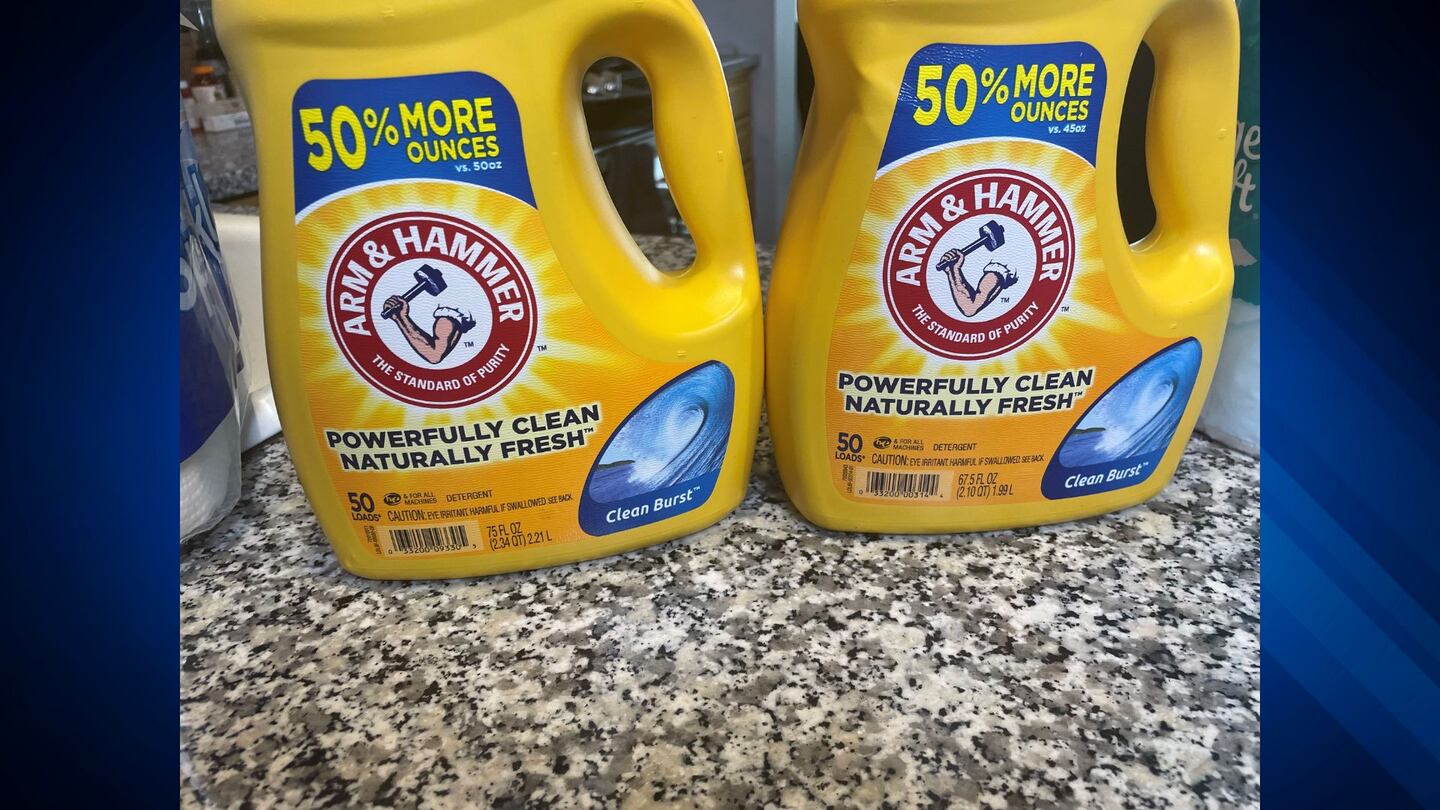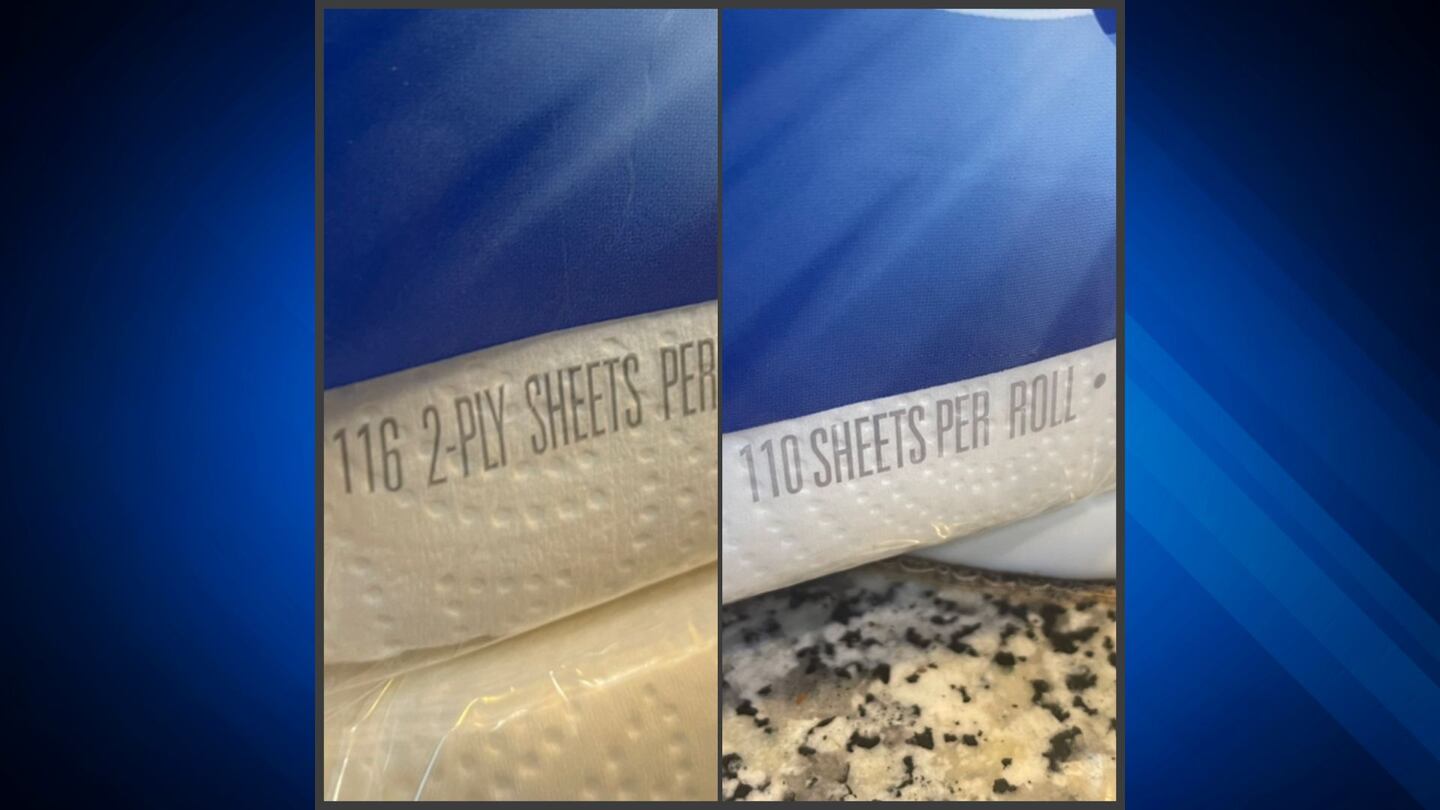DEDHAM, Mass. — Hyde Park shopper Nora B. recently noticed the container of her favorite brand of hummus felt a little smaller.
“It looked the same on the top but when you felt the bottom it had a little divot. It looked like the same packaging but they had shrunk it,” Nora said.
Shrinkflation occurs when companies reduce an item’s size, quantity or quality but keep its price the same, giving consumers a little less for their money. Consumer World founder Edgar Dworsky says the practice has been around for decades and tends to occur more when inflation is bad.
“As prices go up for manufacturers, they keep looking for more ways to make more money and one of those ways is to shrink the products,” Dworsky said. “Sometimes it’s small, sometimes they take a lot out of the product. But it tends to be invisible because the packaging tends to be identical.”
Shrinkflation is not illegal or even deceptive as long as products are clearly labeled, according to the Massachusetts Office of Consumer Affairs and Business Regulation. Dworsky says shoppers need to pay close attention to how much they’re getting each time they go to the store.
Dworsky showed us several examples of shrinkflation in April. He recently tracked down three more examples to illustrate how shoppers are paying the same price for less product.
Product: ANGEL SOFT TOILET PAPER 6-PACK
Cost: $5.49
Old package: 429 sheets per roll
New package: 320 sheets per roll
Difference: 774 less sheets per package
“You lost over one hundred sheets on every roll, yet the six packs look almost identical,” Dworsky said.
Product: ARM & HAMMER DETERGENT
Cost: $5.99
Old container: 75 ounces
New container: 67.5 ounces
“The bottles look almost identical. I don’t know what they did to it but it still says on the front you get 50 loads,” Dworsky said. “Are you really going to look at the smaller print on there that says 67.5 instead of 75 ounces?”
PRODUCT: SPARKLE PAPER TOWELS 6-PACK
Cost: $7.99
Old package: 116 sheets per roll
New package: 110 sheets per roll
Difference: 36 sheets per package
“The company made some money, 36 sheets saved on every package. They look so much the same and you notice they don’t have the big ‘116 [sheets]’ anymore on the new product. Only a little fine print that says 110 [sheets],” Dworsky said.
Dworsky said there are four ways to protect yourself from shrinkflation:
FOCUS MORE ON SIZE
Pay close attention to quantity and weight; it makes it easier to spot shrinkflation when your favorite product suddenly gets smaller.
“We have to look at the products we buy all the time. How many sheets on your rolls of toilet paper or paper towels? How many ounces in your orange juice? How big is the family size of cereal?” Dworsky said. “That’s the only way you’ll be able to tell if the manufacturer is tinkering with it when you go back to buy the next box or bag.”
COMPARE BRANDS
Check out a company’s competitors if your favorite product has downsized--and don’t forget to look at the store brand.
“The store brand tends to be the last to downsize,” Dworsky said. “See if a competitor hasn’t changed and switch brands.”
COMPLAIN TO THE COMPANY
Write an email or a letter to the manufacturer to complain. It won’t stop shrinkflation but it could save you some money.
“Are Charmin or Cottonelle going to change because you wrote a letter? No, but they’ll send you some coupons,” Dworsky said.
USE UNIT PRICING
Unit pricing is the “price per ounce” or the “price per count” labeled on the shelf. Unit pricing gives buyers a good baseline for what their getting for their money.
“[With unit pricing] you can compare different products of different sizes and brands and find which one really is the best deal,” Dworsky said.
Download the FREE Boston 25 News app for breaking news alerts.
Follow Boston 25 News on Facebook and Twitter. | Watch Boston 25 News NOW
©2022 Cox Media Group











